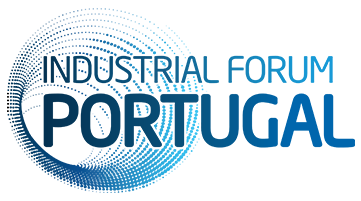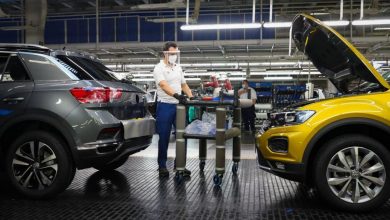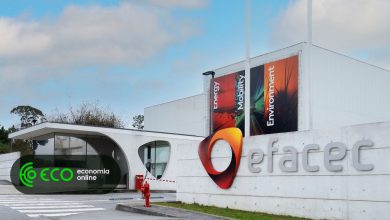
Holden’s demise doesn’t signal the death of Australia’s automotive industry
Holden was Australia’s car and the death of the brand has punctuated the end of mass car manufacturing in Australia a couple of years ago.
But if you think Australia is completely out of the automotive business, then you are very much mistaken.
According to industry analysts IBISWorld, Australian automotive manufacturing generated $4.1 billion of revenue last financial year, with 388 businesses operating across 466 workplaces employing nearly 7,500 people.
The same report also highlights the blow from the mass car producers pulling out of the market — revenue is down by almost two-thirds over the past decade, with the bulk of that fall occurring since the big three remaining local car makers (Ford, Holden and Toyota) ceased Australian production during 2016 and 2017.
However, while IBISWorld is forecasting further decline, the losses will no longer be precipitous.
Australia’s auto sector is still expected to generate more than $3.2 billion in revenue in 2023-24, with 301 businesses employing almost 4,400 people.
That may leave you wondering, ‘what’s left?’
The biggest part of the answer is trucks and buses, which respectively make up 54 and 14 per cent of the remaining auto industry in Australia.
While Australia now imports virtually all its cars, the nation still has three significant truck factories owned by multinational giants Volvo, PACCAR and CNH Industrial, which between them have close to 50 per cent market share.
When you pass a Volvo, Mack, Kenworth or Iveco truck on the road, the chances are it was manufactured here.
 PHOTO: Locally produced vehicles hold around half of Australia’s truck market. (Supplied: The Australian Made Campaign/Department of Industry)
PHOTO: Locally produced vehicles hold around half of Australia’s truck market. (Supplied: The Australian Made Campaign/Department of Industry)Volvo’s factory in Brisbane employs around 650 staff, according to a recent report from the Federal Department of Industry, and can currently produce 3,000 trucks a year, with plans to invest $25 million to increase that capacity to 4,000.
The company makes around a billion dollars a year of revenue in Australia and IBISWorld said that has been growing solidly for each of the past five years.
PACCAR Australia makes its Kenworth trucks in Melbourne and employs more than 800 people in manufacturing and wholesaling, while CNH Industrial’s Iveco truck and bus factory is located in Dandenong, just outside Melbourne.
With close to $2 billion in annual revenue between the three of them, these are serious manufacturing outfits.
They also utilise significant quantities of locally produced automotive components — for example, according to the Department of Industry, Volvo’s Brisbane factory has about 90 local suppliers providing more than 2,500 different components, many of which are made in Australia.
Some companies that made parts for the car makers have even survived and thrived by shifting to producing components for the truck industry.
Exports, aftermarket and new tech
However, it’s not just those companies supplying parts to the big truck makers that are still in business.
In a survey conducted in January 2018 — admittedly only a few months after the last mass-production car factory in Australia had closed — the Department of Industry found that 74 per cent of automotive supply chain businesses were still trading.
This figure jumped to 86 per cent of Australian-owned businesses, while about half the multinationals had closed their local operations once the big car makers shut down production.
Many survived through a new or increased focus on exports, helped by $1.3 billion in federal assistance to the auto sector between the announcement of the factory closures in 2013 and the final shutdown in 2017, with a portion of this money going to help establish new export markets.
When this latest round of transition support started, at least 56 per cent of eligible businesses were sending products overseas. By 2017 that had risen to 81 per cent.
And, while many foreign companies simply shut up shop locally, some others also expanded their exports.
Bosch diodes made in Australia are now being sent to Europe, the USA, India, China, Japan, Korea and elsewhere, with the factory’s annual output of 120 million units making up roughly a fifth of global market share for those particular components.
Nissan exited car mass production in Australia a long time ago, closing its assembly line in the early 1990s, with hundreds of job losses, as reported at the time by the ABC’s Mark Colvin for Four Corners.
Space to play or pause, M to mute, left and right arrows to seek, up and down arrows for volume.
However, the company still retains a casting plant at Dandenong, which supplies critical aluminium components for the company’s global operations, including the Leaf electric vehicle — for some parts it is the sole supplier.
Let’s also not forget that, even as Holden pulls out entirely, Ford still employs more than 2,000 people in its Asia-Pacific design and engineering hub in Melbourne and says it has no plans to go anywhere.
At a time when we’re talking about the decline of Australian automotive industries, some companies are just starting up.
Wheelmaker Carbon Revolution is one of them. Founded in 2007, it is selling lightweight, single-piece carbon fibre wheels to major carmakers for high-performance vehicles, such as the Ford Shelby Mustang GT350R.
It’s still loss-making but is in the process of industrialising and expanding its production in an industry that is supposed to be dying in this country.
For those looking ahead to the future, Australian start-up Baraja is developing LiDAR technology to guide driverless cars from its base in Sydney’s north.
Niche vehicles
While mass-market car production is over, boutique carmakers still exist and are even setting up.
 PHOTO: Campbell Bolwell has been designing and building sports cars since the 1960s. (ABC RN: Fiona Pepper)
PHOTO: Campbell Bolwell has been designing and building sports cars since the 1960s. (ABC RN: Fiona Pepper)Bolwell started making sports cars in the 1960s and 70s and, after a long hiatus, has returned to producing even faster supercars in its factory in Melbourne.
But it’s got competition setting up in Adelaide, with arguably Australian motorsport’s most famous name, Brabham, building Australia’s first hypercar, the BT62.
“What’s a hypercar?” you may ask. Just one that can set the fastest lap recorded by a closed-wheel vehicle around Australia’s most iconic racetrack, Mount Panorama.
 PHOTO: The new Brabham BT62 will be built in Adelaide, South Australia. (Supplied: Brabham Automotive Company)
PHOTO: The new Brabham BT62 will be built in Adelaide, South Australia. (Supplied: Brabham Automotive Company)The BT62 set a lap time of just under 1:59 a year ago, shaving almost 5 seconds of the fastest lap by a V8 Supercar.
With a limited production run of just 70 cars and a price tag around $2 million, it certainly can’t be described as mass-market.
Another speciality market that Australian vehicle manufacturers are looking to exploit is defence.
German defence giant Rheinmetall has just finished building a $170 million manufacturing facility in Queensland, which is expected to commence operations later this year.
It’s been constructed to handle a $5.2 billion contract for the company to build more than 200 armoured reconnaissance vehicles for the Australian Army.
So, while the Australian auto industry has shrunk dramatically over the past few years, reports of its death are premature and exaggerated.
Font: ABC






